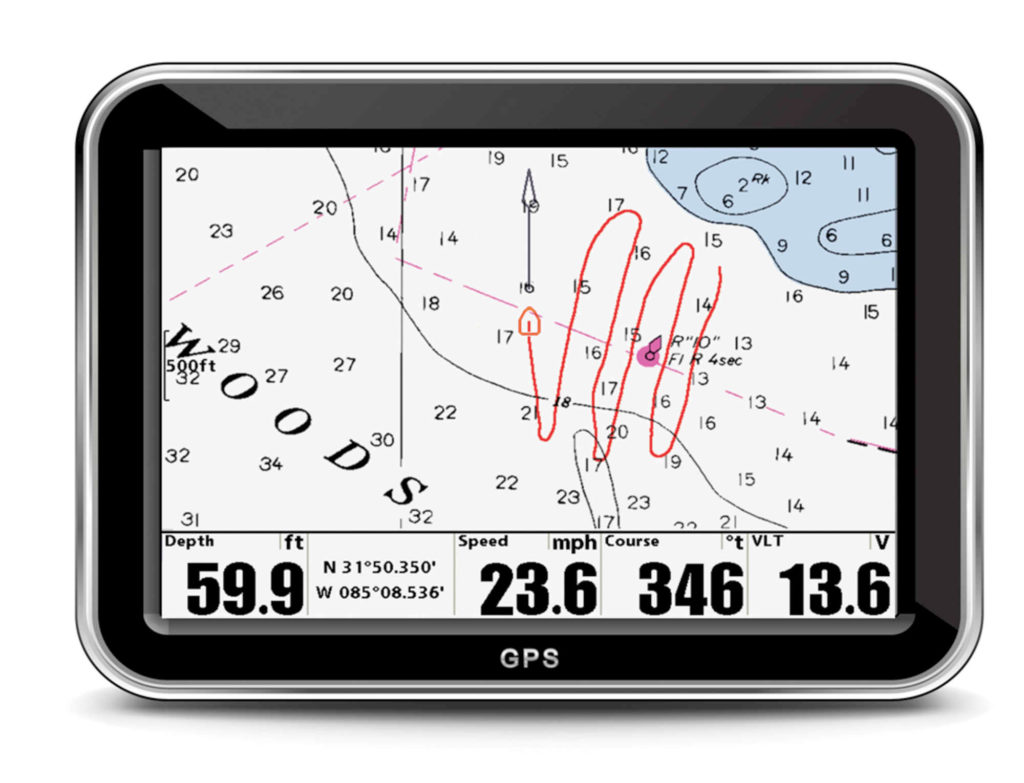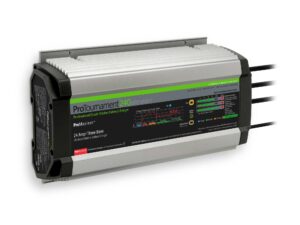
Q. How accurate is GPS?
A. Ninety-five percent of the time, GPS accuracy is often within or 9 to 10 feet. In worst- case conditions, however, accuracy can degrade to 25 to 26 feet. To ensure the most accuracy, your GPS antenna should have a clear, unblocked view of the sky. Blockage can limit satellite-signal reception, which diminishes accuracy. Check your GPS’s status screen. It is a good indicator of satellite reception, signal strength and positional accuracy. The more satellites, the more precise your position fix. Create benchmarks, such as your position in your slip, at known navigation aids and familiar landmarks, to confirm your GPS is experiencing normal accuracy. Also, keep your GPS software and cartography up to date. Installing an external antenna, rather than relying on an internal one, is one of the easiest means to increase GPS accuracy.
GPS Accuracy Tips
Many fixed-mount GPS models come with built-in internal antennas. These normally work well, particularly when sets are mounted in an open cockpit or on a flybridge. Yet if a set’s internal antenna is partially blocked by the boat’s superstructure, hardtop or other objects, accuracy may suffer. In these cases, an optional external antenna can make a significant difference.
If your GPS continues to be inaccurate, be aware that using an external antenna mounted off to one side of the boat on large boats may affect accuracy up to several feet when attempting to pinpoint an underwater hazard or fishing spot.
If you are using a handheld GPS, how you hold the unit can affect accuracy. Most have an internal patch antenna, which is most accurate when held flat or horizontally. Signal reception is reduced when held upright. Some models have a protruding, quad helix antenna that receives the strongest signals when held vertically. Also, holding a portable GPS at shoulder height is most effective to avoid signal blockage from your own body.
You should also understand the importance of WAAS and GLONASS when it comes to GPS. Both can enhance accuracy. WAAS is a correction signal provided by a network of U.S. land-based reference stations that send error correction signals to GPS satellites.
For maximum accuracy, confirm that WAAS is enabled on your GPS. Some sets, particularly handhelds, come with this feature turned off. Check the main setup menu of your set under “Settings” to activate the WAAS error-correction feature.
GLONASS is a Russian satellite system similar to our GPS system. Many current GPS models are coming with the ability to receive GLONASS positional data. When enabled, the number of satellites increases from 31 to 54, significantly enhancing accuracy under weak and marginal conditions due to signal blockage, poor atmospheric conditions and internal-receiver processing errors. The combination of GPS, WAAS and GLONASS can also result in a 20-percent faster signal acquisition. Consult your owner’s manual under specifications to confirm your set is capable of receiving these satellite signals. Your manual will also explain how to check to see if WAAS and GLONASS are enabled.
GPS accuracy may be further improved when the Japanese MSAS and European EGNOS positional satellite systems become fully operational. Both will help to add increased position determination, signal stability and repeatability.
Position Averaging is a feature that measures your position over several minutes to minimize errors with handheld units. This is automatic with some models and must be turned on with others. If recording an important waypoint manually, hold your portable device still for two to three minutes for best results.
Accuracy is the key to better and safe navigation and to enjoying on-the-water activities, such as fishing and diving. So use these tips to make your GPS as accurate as possible.







